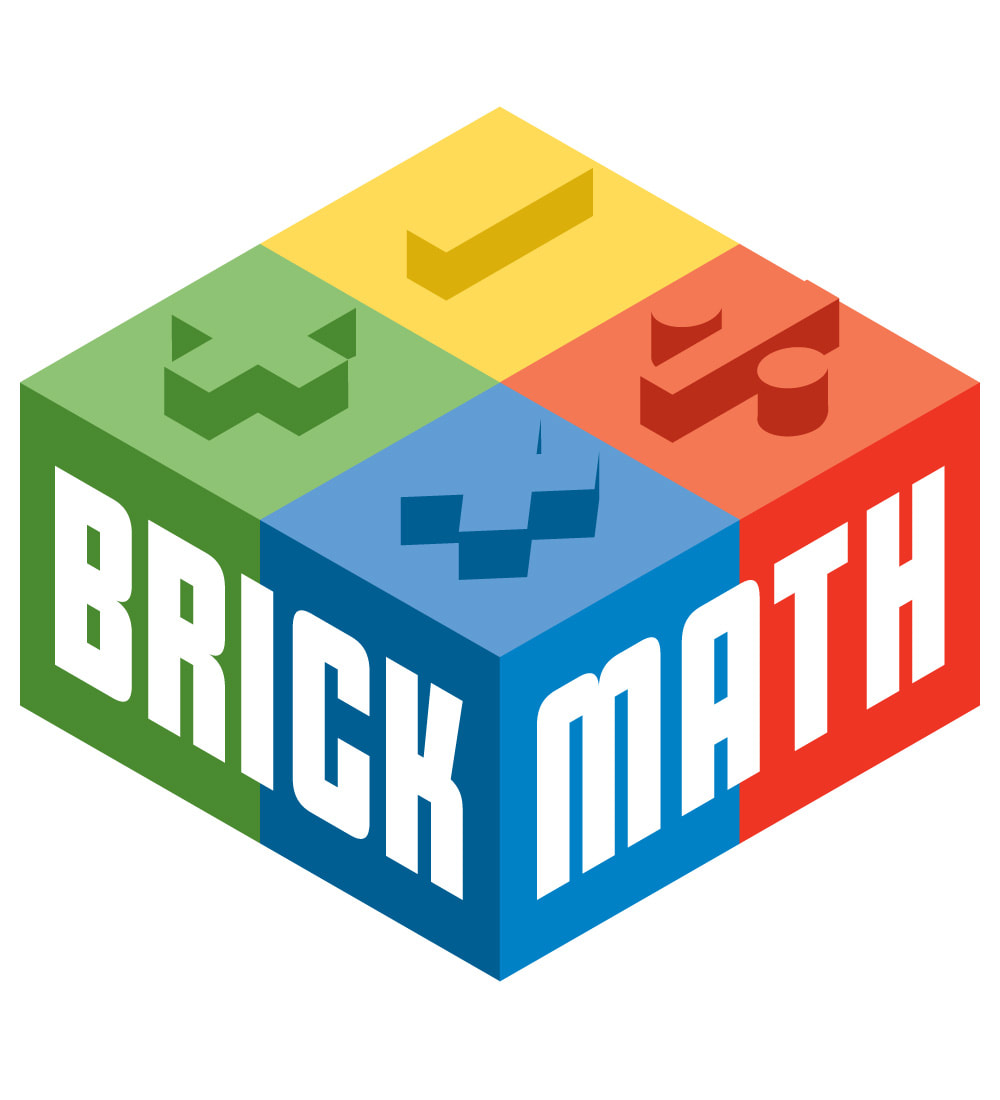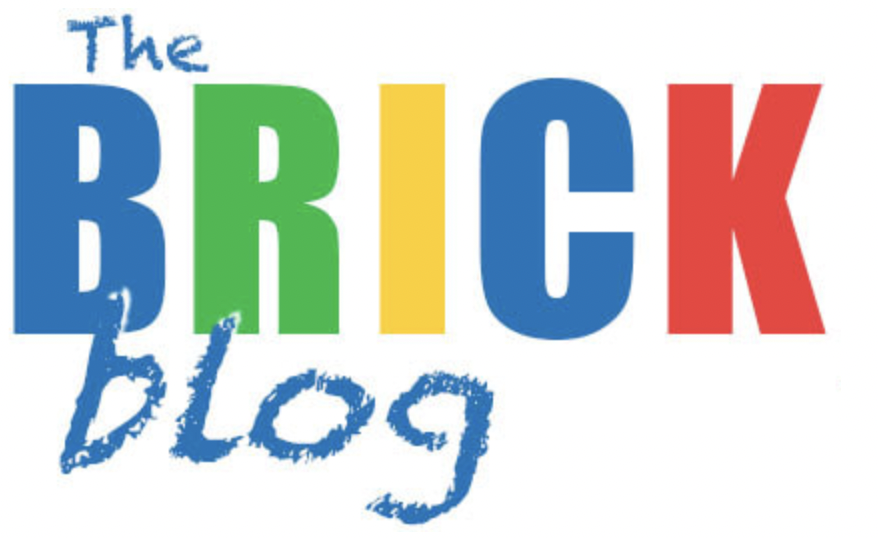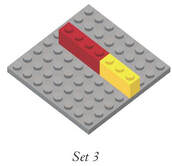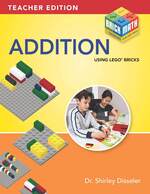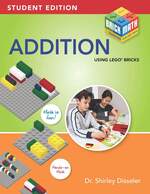 The free Brick Math Lesson of the Month for May is from Brick Math Addition, and it's the first time in the series that the concept of place value is introduced. To get your free lesson on Place Value Addition, plus a new lesson each month, click here.  Place value is an important idea for students to learn early on. Modeling with bricks makes it easy. Here's the idea: 1x1 bricks model the ones place, 1x2 bricks model the tens place, and 1x3 bricks model the hundreds place. That's as far as we go in this lesson, but soon we will extend the place value modeling idea to thousands, ten-thousands, hundred-thousands, and more!  This lesson shows students how to model place value with bricks, and then it uses those models to show addition within the place values. Students start by modeling the numbers 25 and 123 with bricks. Once they understand the concept, they move to adding two numbers. When students model the math with bricks to show place value, the math becomes clear and concrete. This lesson first shows the pages from the Addition Teacher Edition, with the step-by-step lesson guide for the teacher to follow. Then the rest of the lesson are the corresponding pages from the Student Edition, which have written instructions and give students a place to draw the models they are building. Try this lesson to introduce your students to the concept of place value. The hands-on nature of building with bricks will help them understand the meaning of place value quickly. Brick Math is a complete math curriculum for kindergarten through 8th grade that models the math with bricks. The curriculum is divided into 13 separate content areas: Counting, Addition, Subtraction, Multiplication, Division, Basic Fractions, Basic Measurement, Fraction Multiplication, Fraction Division, Advanced Measurement and Geometry, Decimals, Data and Statistics, and Pre-Algebra. Students can start anywhere in the curriculum. It can be used as a complete math curriculum or brought in as a supplement to help students who aren't having math success with other programs.  Brick Math works in many applications: for homeschooling, math intervention, enrichment, and as a whole-school program. Materials are simple and affordable. For an innovative way to teach and learn K-8th grade math, check brickmath.com. The website includes videos for both teacher training and direct instruction of students. You can learn more about how Brick Math improves students' math test scores and hear what people who are using Brick Math have to say about the program.
0 Comments
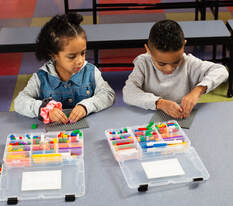 The October 2023 FREE Brick Math Lesson of the Month comes from Addition Using LEGO® Bricks. It helps students understand that there are many ways to combine numbers. To get the October 2023 Brick Math Lesson of the Month, "How Many Ways to Make 6?" plus a new lesson each month, click here. Each Lesson of the Month includes the Teacher Lesson Guide as well as the Student Workbook Pages that correspond to the lesson. 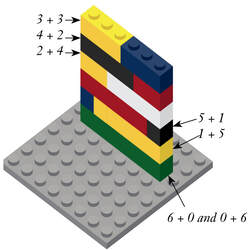 In the lesson, students model all the different ways numbers can be combined that total 6: 6 + 0, 5 + 1, 4 + 2, etc. Building a tower of bricks, students begin to understand what addition really means. It's a foundational skill that early learners need to have, and this Brick Math lesson turns the numbers from abstract to concrete. 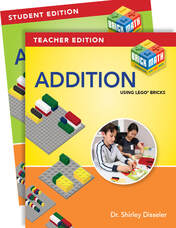 Brick Math is a K-8 math curriculum that uses LEGO® bricks to model 13 different math subjects: Counting, Addition, Subtraction, Multiplication, Division, Basic Fractions, Basic Measurement, Fraction Multiplication, Fraction Division, Advanced Measurement and Geometry, Decimals, Data and Statistics, and Pre-Algebra. Data and Statistics and Pre-Algebra expand the Brick Math curriculum to include grades 7 - 8. Brick Math works in many applications: for homeschooling, math intervention, enrichment, and as a whole-school program. Materials are simple and affordable. If you are a math teacher or a parent with a student at home who is learning K-8th grade math, check brickmath.com. The website includes videos for both teacher training and direct instruction of students. You can learn more about how Brick Math improves students' math test scores and hear what people who are using Brick Math have to say about the program.
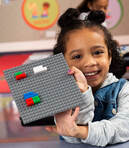 The Brick Math Free Lesson of the Month for April 2023 comes from the book Addition Using Lego® Bricks. It's a great way to show young learners the meaning of ones and tens, and how to transform 10 ones into 1 ten. To get the April 2023 Brick Math Lesson of the Month, "Decomposing Numbers," plus a new lesson each month, click here. 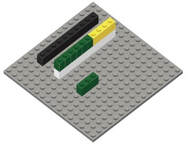 This concept is foundational to mathematics, and will appear again and again as students learn about place value throughout the elementary and middle school math curriculum. This simple method of showing how to decompose from ones to tens using LEGO® bricks will help every student fully grasp the concept. 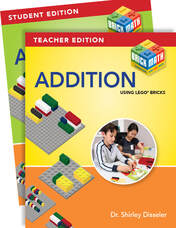 Brick Math is a K-6 math curriculum that uses LEGO® bricks to model 11 different math subjects: Counting, Addition, Subtraction, Multiplication, Division, Basic Fractions, Basic Measurement, Fraction Multiplication, Fraction Division, Advanced Measurement and Geometry, and Decimals. This year, the program will expand to include grades 6 - 8, with the additional subjects Data and Statistics, Pre-Algebra, and Ratios and Proportions. Brick Math works in many applications: for homeschooling, math intervention, enrichment, and as a whole-school program. Materials are simple and affordable. 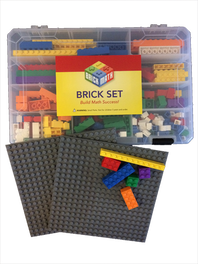 If you are a math teacher or a parent with a student at home who is learning K-8th grade math, check brickmath.com. The website includes videos for both teacher training and direct instruction of students. You can learn more about how Brick Math improves students' math test scores and hear what people who are using Brick Math have to say about the program. 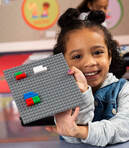 Learning to add is an important building block of the math curriculum in the early years. Addition is a foundational skill that leads to success in all the math subjects that follow. How can a student learn to add in a way that teaches them to understand the why and how behind the process? Here are five keys to learning addition for young students: 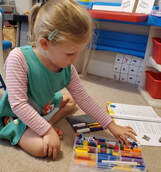 1. Putting things together in like sets: Addition concepts start to form long before children learn to add in school. When they begin to group things together into like sets, children are beginning to develop the basic idea of addition. A set is a physical representation of a number, and young children learn to group similar items into sets, counting up to the number of that set. 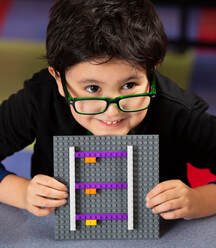 2. Strategies of counting on, counting back, and one more: Early number skills provide a foundation for learning addition. Students must be fluent in counting before they are ready to learn to add. When a student has learned to count on (forward), count back, and put one more with a group, the student has progressed far beyond simply memorizing a string of numbers in order (like 1, 2, 3, 4, 5), and is ready to learn to add. 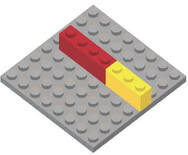 3. Direct modeling of the process of addition: Many educational researchers have shown that teaching students by directly modeling the math with physical objects leads to greater understanding. Brick Math uses LEGO® bricks to model the math. It’s the perfect tool because of the visual and tactile nature of the bricks. Each stud counts as 1, so students can see and feel the numbers they build.  4. Vocabulary of math: It’s important for students to learn the right words to describe the math they are learning. When they know what the words addend, sum, result, solution, and altogether mean, they can talk about addition. Teachers and parents should be careful to use the term addition symbol rather than plus sign when discussing what is happening in an addition problem. “Plussing” is not a word, and the word plus only represents the symbol of the math, not the action. Every chapter in Brick Math starts with a list of the key vocabulary students will learn in those lessons. 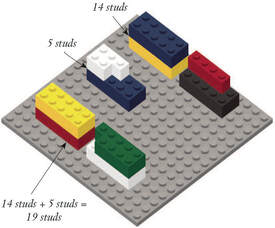 5. Addition within the context of 10: Early on, students need to understand that the number system is based on tens. LEGO® bricks can be used to model addition against a physical background of 10 studs. This is a great way to start representing the number system of ones, tens, and eventually, hundreds. The illustration here shows how to model 14 + 5 = 19 with LEGO® bricks while introducing the idea of groups of ten. Addition is the stepping-stone to all other math, so it’s critical that kids understand it fully. It leads directly into subtraction as the opposite process to addition. In second or third grade, a firm understanding of the process of repeated addition leads to comprehension of multiplication. 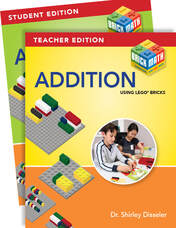 Brick Math’s Addition Using LEGO® Bricks is a great way to teach young learners about addition. It starts with teaching the concept of addition and progresses through place value and adding larger numbers. The use of LEGO® bricks to model the math makes it fun to learn, too! Brick Math is a K-6 math curriculum that uses LEGO® bricks to model 11 different math subjects: Counting, Addition, Subtraction, Multiplication, Division, Basic Fractions, Basic Measurement, Fraction Multiplication, Fraction Division, Advanced Measurement and Geometry, and Decimals. It works well for homeschooling, math intervention, enrichment, and as a whole-school program. Materials are simple and are not shared between students. It adapts easily to online instruction. If you teach math or have a student at home who is learning math, check brickmath.com. The website includes videos for both teacher training and direct instruction of students. You can learn more about how Brick Math improves student math test scores and hear what people who are using Brick Math have to say about the program. 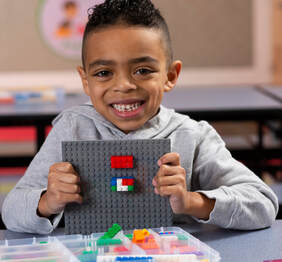 Happy New Year! The Brick Math Lesson of the Month for January 2021 teaches students the basics of addition using LEGO® bricks. It's a simple, yet very effective, way to show students what it means to add two numbers together. Try it with the numbers shown in the lesson, and then use the same technique with other numbers until your students fully comprehend the meaning of addition. To get the January 2021 lesson, and a new lesson each month, sign up here. Try this with your students, at home or in the classroom (or in the virtual classroom). The Brick Math system of representing numbers with LEGO® bricks is the perfect way to introduce students to the concept of addition. If your students are very young, you could use the same technique with larger DUPLO® bricks. 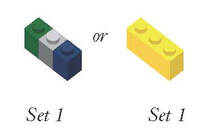 The lesson starts with the Teacher's Lesson Guide. All the steps for teaching students how to model the numbers 3 and 4 are included. Then the lesson shows students how to model the addition of those two numbers and find the sum. The corresponding pages from the Student Workbook follow, with space for the student to write responses as well as draw the models they have built. Brick Math is a K-6 math curriculum that uses LEGO® bricks to model 11 different math subjects:
Counting, Addition, Subtraction, Multiplication, Division, Basic Fractions, Basic Measurement, Fraction Multiplication, Fraction Division, Advanced Measurement and Geometry, and Decimals. It works well for homeschooling, math intervention, enrichment, and as a whole-school program. Materials are simple and are not shared between students. It adapts easily to online instruction. If you teach math or have a student at home who is learning math, check brickmath.com. The website includes videos for both teacher training and direct instruction of students. You can learn more about how Brick Math improves student math test scores and hear what people who are using Brick Math have to say about the program.  Happy holidays to all! Here's our present to you: A brand-new Brick Math Lesson of the Month! For December, we have a lesson from Addition Using LEGO® Bricks. The lesson helps students learn two important concepts: 1. How to model place values with bricks 2. How to model addition using those place value models This is a great way to teach students about place values. The lesson models the ones with 1x1 bricks, the tens with 1x2 bricks, and the hundreds with 1x3 bricks. Once students understand how to model numbers using place values, it’s a short step to learning how to add using place values. The lesson of the month gives the step-by-step lesson from the Teacher’s Edition first, and then shows the corresponding pages in the Student Edition that students will complete as they learn. To receive this Lesson of the Month and be registered to get a new one every month, click here. 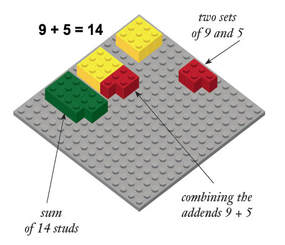 Using LEGO® bricks to model 9 + 5 = 14 Using LEGO® bricks to model 9 + 5 = 14 Learning addition is far more than memorizing “one plus one makes two”! After young students know about counting and cardinal numbers, they need to understand the idea of sets and putting objects together. Building models of addition with LEGO® bricks is the perfect way to show students the action of addition. The bumps on the bricks, which are called “studs,” are a great tool for using one-to-one correspondence to teach addition. Plus (pun intended!), students have fun learning with LEGO® bricks! In Addition Using LEGO® Bricks, the hands-on activities using LEGO® bricks help students learn the concepts of: • joining sets • solving part-part-whole problems • comparisons • decomposing numbers • place value Brick Math helps students learn addition through its integrated program. The teacher leads students through step-by-step lesson plans. Using the bricks, students create models of the math as they learn. They then draw the models they’ve created and explain how the models work. These different ways of interacting with the bricks lead to a deep understanding of addition. There are many different ways to model with LEGO® bricks in the Brick Math curriculum, and students have the opportunity to create multiple solutions for problems instead of looking for only one right answer. Learning math using LEGO® bricks with Brick Math is fun—for the teacher AND the students! Click here for a preview of the lesson, “What Does It Mean to Add?” from Addition Using LEGO® Bricks—Teacher Edition. 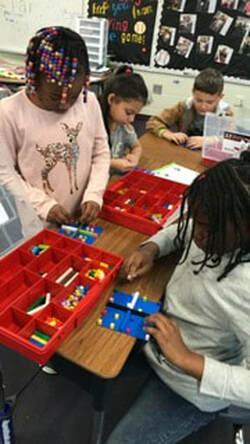 A new mixed-method study shows significant gains in test scores for math content in grades K - 2 after instruction using Brick Math. The findings from a new study of 500 students in kindergarten, first grade, and second grade shows that 320 of the 500 students, or 64 percent, made pre-to-post assessment gains of 4 or more points on a 10-point scale. Each student was given ten problems to complete, in writing or orally, in the areas of counting and cardinality, addition, or subtraction prior to being taught with the Brick Math methods. The same problems were then used with the Brick Math program. Before starting Brick Math, students were asked questions about why they responded in certain ways to the problems to help the researcher identify misconceptions held by students about number sense and computational understanding. Once the problems were completed using the Brick Math methods, the problems were again scored on a scale of 1 - 10 (correct versus incorrect). Students were then asked to discuss the meaning of the models with the researcher. Students were also encouraged to ask questions for clarity during the teaching process. The discussion of the models yielded some important information about how students learn and understand math. Students in kindergarten made comments such as: “Now I see why 8 is larger than 3,” and "5 is between 3 and 8.” Students learning about place value said, “Counting bricks in the tens and ones place helps me know what number goes in each place.” A student further explained, “Two 1x2 bricks and four 1x1 bricks show that the tens place is 2 and the ones place is 4, and the whole number is 24.” Participants: This study was conducted in public and private school classrooms in New Jersey and North Carolina, in rural, suburban, and urban settings for 150 kindergarten, 200 first grade, and 200 second grade students. Data and Findings: The data was analyzed using a one-way ANOVA from SPSS, which indicates that achievement was statistically significant across all three grade levels and all content materials. A Pearson correlation shows no significance between the performance of girls versus boys. This finding is interesting, in that many believe LEGO® bricks are preferred by boys. In this study, the girls did as well as the boys in achievement when using Brick Math. The variables measured in the study included: focus and body language when using Brick Math, verbal participation and questioning by the student, the degree to which students were able to make conceptual meanings in the models, performance pre to post (before Brick Math instruction and after Brick Math instruction). It was interesting to note that the degree of focus was significant (p = 0.03) upon introduction of the bricks to do the math problems. The findings also suggest that both the level of performance and the degree of perseverance are directly related to the degree to which the student could focus (p < .05) in all correlations of these variables. The median pre- to post-difference in the study across all groups was 4 with a range from 0 – 10. The means are displayed for each grade, pre and post, in Table 1. The spread of the mean shows wide differences before and after the instruction in each of the three grades, with the largest difference found in grade 2. Table 1: Comparison of Means Pre-to-Post by Grade Level Grade N Means Pre Post K 150 3.3600 7.2667 1 150 4.0467 7.6133 2 200 3.6050 8.0300 Discussion: The modeling of math offers students a way to connect, but when LEGO® bricks are introduced as the medium for learning content, students become enthusiastic, focused, and engaged, which leads to motivation and time on task. Education experts agree that motivation and engagement are the two key elements in getting students to learn. This study is part of a larger study being conducted to emphasize the value of Brick Math in elementary and middle school math classrooms. This study, which utilized Brick Math as both a guided math and whole class lesson, points to positive learning gains for children in the early years of elementary math. Setting the stage for more sophisticated math content, getting students to understand the “why” behind the basics of math is a key component necessary in early stages of math learning. If students can build a model of the problem and solution, and explain verbally or in writing the “why” behind the math, the likelihood of future success in both their opinions about math and their ability to persevere in dealing with more difficult math will be greatly enhanced. |
Categories
All
Archives
July 2024
|

